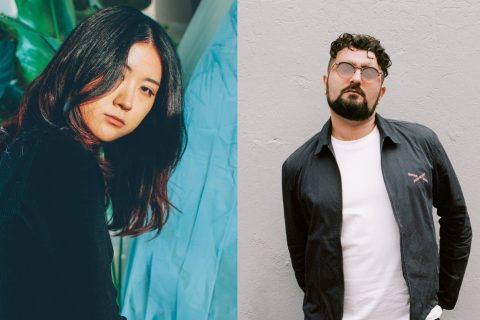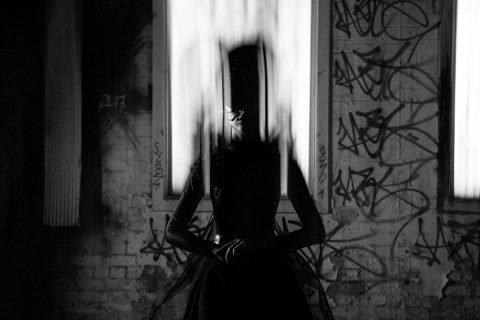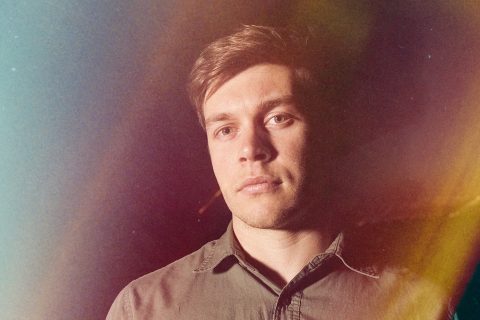That Sound is a series where we explore and share forward-thinking musical ideas from some of Australia’s most compelling electronic artists, producers and musicians. For the first one of the series, LÂLKA shares some personal tips for vocal processing and a downloadable sample pack of her vocals for you to experiment with.
2019 was a year of major change for electronic pop. Artists like Billie Eilish ignored the musical ideas that categorise a style of sound and label them in a sub-genre. It was a year of artists mingling across the spectrum of sounds and picking the best aspects of music to create innovative new ideas. An Aussie artist that’s no exception to this new philosophy is the Brisbane based LÂLKA. Although fairly fresh-faced in the scene, her background in classical music and unique direction have placed a beacon on her discography so far. Combining ideas that are energetic, abrasive and spontaneous, we caught up with LÂLKA to understand more about how she makes her music.
Download the vocal sample pack from LÂLKA
*Requires a digital audio workstation (DAW) to complete the step-by-step guide
When did you start making music and why?
I trained as a classical musician but became uninspired by performing that type of music, so I switched to electronic music. Being a producer allowed me to be able to express myself more through music.
How would you define your sound?
It’s high-energy pop with interesting textures and surprising sounds. Vocally and lyrically there’s a lot of attitude.
What is the story behind your song, bang bang?
I’d just finished writing Go Psycho, which although had a lot of energy, was pretty heavy and dark. I wanted to write something less serious that people can still dance to. Lyrically the song is about having fun without worrying about what people think of you. (Embed of video)
What was the thought process behind the vocals processing in your music?
I like using my own voice in production to create textures and rhythmic patterns. Using my own voice creates a unique tone and helps consolidate the whole song sonically when the lead vocals are added. For example, I use breaths instead of hi-hats in some places, or I use a manipulated version of a voice recording to create a “synth-like” melodic line. In Bang Bang, the vocal sample in the drop was recorded with a deliberately croaky voice, very close to the mic – this captured all the “imperfect” artifacts of my voice to give it grain and colour.
Step-by-step guide:
1. Record vocal ad-libs with a microphone (Don’t overthink and don’t worry too much about sounding perfect)
2. Put the recording into a sampler (LÂLKA uses Simpler). For some solid tips, there’s a handy video by Slynk that offers great tips on how to get the best use out of Ableton’s Simpler and Sampler.
3. Play around with the effects of your chosen sampler. Some suggestions I would recommend include:
– Autotune EQ
– Formant
– Reverb
The idea is to change the tone of the vocal recording.
4. Find fragments from the recordings that you like. For example, it could be the way certain syllables fit into a pattern. You could turn that into a rhythmic hook. Another idea is you could combine bits of a vocal ad-lib into a melody. I like to take different interesting pieces and combine them together to make something new.
5. Chop the ad-libs up and put them into Drum Rack. You can keep adding effects like delay, or play with panning options, or reverse samples. Experiment by playing different rhythm patterns on drum rack until you arrive at something you like.
In the sample pack from LÂLKA, there are Dry and FX based samples. The dry samples are the raw sample vocal loops that do not have an effect applied. The FX-based samples are the raw vocal loops with her chosen effects applied. This offers you the opportunity to re-create some of the different ideas LÂLKA has created.
Other ‘That Sound’ Resources
– Let Ninajirachi take you through setting up a drum rack and creating a dynamic drum loop
– See how Motez and Qrion made the arpeggiator in their single, ‘Slow Down’.
– Learn about resampling and processing sounds for percussion with Pat Carroll
– See how BRUX does call and response vocal processing





Comments